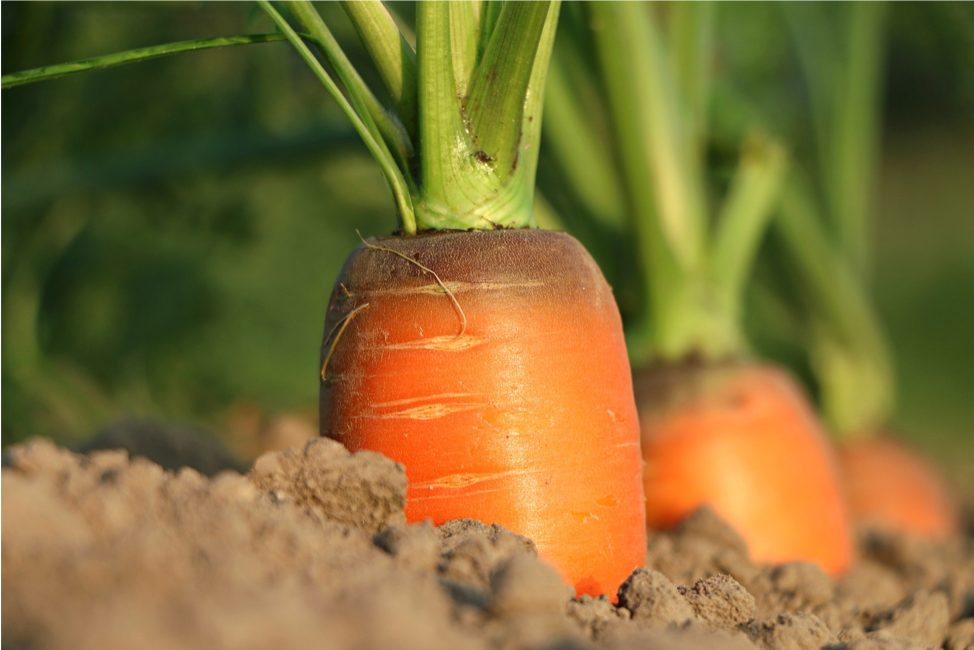Pourquoi ne pas profiter du mois de la nutrition pour explorer le pouvoir des aliments et le potentiel pédagogique des expériences liées à l’alimentation.
Autrefois, chaque famille avait un potager. Il n’était pas nécessaire d’apprendre aux enfants que les carottes ou les pommes de terre poussent dans le sol. Aujourd’hui, plusieurs élèves vivent en ville et n’ont rien connu d’autre que les légumes surgelés ou pré-emballés. L’alimentation industrielle fait malheureusement partie du quotidien d’un très grand nombre.
C’est peut-être pour renverser cette tendance qu’on remarque un engouement croissant pour les jardins scolaires. Cet article vise à offrir quelques considérations générales afin de guider les enseignant-e-s qui aimeraient faire vivre une expérience de jardinage à leurs élèves.
Sol, eau et minéraux : des éléments essentiels aux plantes
J’espère que je ne vous apprendrai rien en affirmant que les plantes poussent enracinées au sol et que leurs racines puisent à même ce dernier l’eau qui leur est essentielle mais aussi quantité de minéraux desquels elles fabriquent leurs tissus.
Or, il semblerait que près de 500 écoles du Québec sont situées sur des terrains contaminés, dans les Laurentides, au Centre-du-Québec, en Estrie, en Montérégie et sur l’île de Montréal.
Alors avant de se lancer dans un projet de jardinage scolaire, il est fondamental de procéder à une analyse du sol autour de l’école pour s’assurer qu’il soit sain.
Mars c’est le mois des semis
Malgré le réchauffement climatique, la saison sans gel au Québec demeure assez courte. Le Québec est grand. On y trouve plusieurs zones de rusticité, soit l’aptitude d’une plante à supporter des conditions de vie difficiles. La zone 2b est celle où la saison de jardinage est la plus courte tandis que la zone 5b est celle où la saison de jardinage est la plus longue.
Plusieurs légumes et fines herbes ne peuvent pas être semés en pleine terre car la saison trop courte ne permet pas à ces plantes d’atteindre leur maturité avant la venue des premiers gels de l’automne. On peut cependant commencer les semis à l’intérieur, ce qui constitue une expérience pédagogique intéressante. Vous trouverez dans les prochaines semaines des articles proposant quelques activités pour favoriser l’apprentissage des sciences à partir d’activités de jardinage.
Les boîtes à œufs en carton sont un récipient de choix car ils ne coûtent rien. De plus, elles permettent de séparer les godets et planter le tout directement dans le sol puisque le carton recyclé se décompose dans la terre.
Percez-en le fond et déposez-y des gravillons. Puis, emplissez le tout de terreau universel mêlé à un peu de sable.
Si les graines sont fines, déposez-les en surface est saupoudrez-les d’un peu de terreau. Pour les graines plus grosses, formez des trous de 2 cm de profondeur environ. Puis placez chaque graine dans un trou et recouvrez de terreau.
Pour finir, n’oubliez pas d’arroser avec un vaporisateur afin de garder votre terreau humide.
Selon l’espèce, la levée prendra plus ou moins de temps. Il faut savoir s’armer de patience. Un peu comme avec les enfants, chaque espèce de plante a un rythme de croissance qui lui est propre.
Passer à la deuxième vitesse : le repiquage
On nomme repiquage le fait de transplanter un jeune plant issu d’un semis.
Dès que les premières feuilles sont apparues sur la plante, on peut procéder au repiquage. S’il est encore trop tôt dans la saison pour repiquer le jeune plant en terre, on le mettra en pot ou en bac.
Dans certains cas, le jardinage hors-sol ou en bac peut être l’option idéale pour le potager de votre école. Il importe toutefois que le contenant soit doté de trous de drainage et qu’il soit suffisamment profond pour permettre le développement des racines des plantes. Il faut aussi considérer la hauteur du bac en fonction de l’âge et de la grandeur des enfants qui seront impliqués dans le projet de jardinage.
Assurer la pérennité d’un projet de jardinage
Il est assez facile de s’adjoindre un comité qui prendra la responsabilité du jardin scolaire car plusieurs parents voient dans cette activité estivale un moyen d’inculquer à leurs enfants les bases d’une saine alimentation. Qui plus est, il s’agit un concept à la mode. Afin d’assurer la viabilité du projet, il importe que tous les intervenants – élèves, enseignants et parents – s’impliquent dans le projet dès de début. Pour ce qui est de la prise en charge du jardin pendant l’été, des expériences réussies ont montré qu’un moyen efficace consiste à jumeler les familles et à donner à chaque groupe ainsi formé la responsabilité d’une ou deux semaine(s) précise(s).
L’importance de célébrer : la fête des récoltes
Tout dépend du succès du processus et de la quantité de légumes produits, mais quel que soit le résultat, il est possible d’organiser un jour de la Fête de récoltes à laquelle peut participer l’école et la communauté en entier. Costumes, chants, décorations, échange de recettes, il y a mille et une façons de fêter la récolte.
Voilà une façon différente de développer la créativité des enseignants, des parents et des élèves.
Et peut-être aussi « le vivre ensemble ». Pourquoi pas mettre en vedette l’une ou l’autre des cultures de nos élèves d’origines diverses. Une année, faire un jardin sud-américain ou mexicain. L’année suivante, mettre en vedette les cultures du Moyen-Orient ou du bassin Méditerranéen. Puis viendront celles de l’Inde, de l’Asie, etc.
Bref, pourquoi ne pas faire le tour du monde avec nos potagers?
Quelques recommandations
Si cette pratique vous intéresse ou vous souhaitez vivre l’expérience du jardinage scolaire avec vos élèves, voici un lien vers la formation : « jardins pédagogiques et éducatifs: comment arrimer l’éducation et l’agriculture urbaine » qui aura lieu le samedi 14 avril.
Pour obtenir plus d’information ou pour vous procurer des graines biologiques non-traitées, je vous recommande les fermes Lufa.
Finalement, l’organisme Croquarium propose des activités ludiques et pédagogiques autour du jardinage avec le programme Un trésor dans mon jardin.






